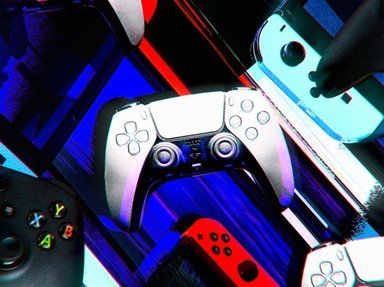Quiz Answer Key and Fun Facts
1. Character naming in video games is everything. Don't be shocked but what was the original name of "Pac-Man" when it was first released in Japan in 1980?
2. "Pac-Man" became one of the all-time greats of video games indoctrinating itself into the popular culture of the late 20th century. What was the initial reaction when it was released?
3. "Donkey Kong", when released in 1981, had revolutionary game play and our simian anti-hero went on to be an enduring billion dollar earner. Don't be an ape and get this one wrong: Which of the following Donkey Kong statements is *NOT* true?
4. Nintendo's Mario was developed in 1981 in an obvious low resolution environment, making animation of facial features difficult. How was his mouth animated?
5. The success of the "Mario" video game franchise was due in no small part to the diversity of characters within the 'Mario world'. For example, which dinosaur character featured in many "Mario" games?
6. "The Legend of Zelda" was introduced as fantasy action-adventure video game franchise with gameplay that involved elements of action role-playing games. What was unusual about the character the game is named after, when Nintendo first introduced the game in 1986?
7. The success of the huge "Pokemon" franchise is due in no small part to the characters themselves. Players are encouraged to name their own Pokemon, but the names given to their species have special meaning. The most recognizable and well-known of the Pokemon is Pikachu, whose name is derived from Japanese onomatopoeia words 'pika' and 'chu'. According to Satoshi Tajiri, this would make Pikachu like which of the following?
8. The creator of "Pokemon", Satoshi Tajiri, developed the idea for the game from which hobby that he enjoyed as a child?
9. Sonic the Hedgehog was a Sega video game character that became the 'star' of the Sega brand. Why was a hedgehog chosen as the protagonist in many of their games?
10. Around the turn of the 21st century, a few developments threatened Sega and "Sonic" was in danger of dying a video games' death. Which one of the following events was *NOT* a factor in Sega's decision to cease video game hardware production to concentrate on software development?
Source: Author
1nn1
This quiz was reviewed by FunTrivia editor
kyleisalive before going online.
Any errors found in FunTrivia content are routinely corrected through our feedback system.
